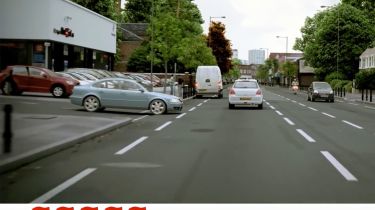Hazard perception test tips: how to pass
The hazard perception test was introduced to make newly qualified drivers safer. Our guide explains what’s involved

Developing your ability to spot any potential hazards on the road is a valuable skill that can help lower your chances of getting involved in an accident. Of course, the more experience you have behind the wheel of a car, the better you will become at spotting potential dangers. The hazard perception test ensures that drivers have an acceptable level of hazard-detecting ability before getting out on the road. In this guide, we will tell you everything you need to know about the hazard perception test, including tips on how to pass and how you can practice beforehand and hopefully pass first time.
The hazard perception test is designed to test your ability to spot and anticipate potential dangers while out on the road. It comprises one of two parts of the theory test organised by the Driver and Vehicle Standards Agency (DVSA), with the other being a multiple-choice questionnaire. You’ll need to pass the hazard perception test before taking your practical driving test to get your driver's licence.
How the hazard perception test works
The cost of booking the hazard perception test is £23.00, though this price also includes the cost of the multiple-choice questionnaire.
You will need to complete the test at a test centre, where you take the test while sitting at a computer with a mouse. You’ll be shown a total of 14 short silent films shot from the perspective of someone driving on a variety of roads in different situations. Most of the films feature one developing hazard, with one of them featuring two.
There’s a 10-second pause at the start of each film to allow you to compose yourself. The idea is to click either mouse button the second you identify a developing hazard, such as a pedestrian about to cross the road or a car arriving at a side turning.
The DVSA regards such events and scenarios as situations where the driver is required to take action, such as changing their speed or direction, or just coming to a stop.
You’ll be awarded points based on how quickly you identify the hazards in the clips. Up to five points are awarded for spotting each hazard, and the sooner you spot it and click, the higher your score, indicated by a red flag at the foot of the screen. You won't be marked down for clicking when then there’s no hazard, but if you just click all the time, the software will pick this up and fail you on that film.
The test lasts 20 minutes, and you won’t have the chance to go back and repeat any clips or questions at the end of the test. The DVSA’s simulation videos or similar online videos are a good way to practice the hazard perception test.
What score do you need to pass the hazard perception test?
To pass the hazard perception test, you’ll need to achieve an overall score of 44 points out of a possible 75 points. You will be informed of your score at the end of the test.
Practicing and preparing for the hazard perception test beforehand is highly advised, as familiarising yourself with the content of the test and developing your hazard spotting skills will put you in the best position to pass on your first attempt. You can practice the hazard perception test online through driving school websites and other online resources.
How do you pass the hazard perception test?
To pass the hazard perception test, you must identify any hazards as quickly as possible. Hazards present in the test typically include animals on the road, people loading parked cars, cars waiting to turn right across the carriageway ahead of you and vehicles taking up both sides of the carriageway.
Not everything that looks like a hazard will develop into one. For example, a car indicating its intention to pull out may not do so. If you click on this, you won’t earn any points.
However, you won’t be penalised for clicking on such occasions. It’s only over-clicking that’ll be disqualified, and you can’t retake a failed video. Remember, though, the pass score is 44 points, so you will have plenty of opportunities to recover lost marks.
Next steps after your hazard perception test
Once you've passed your hazard perception and driving tests, you'll need to find a cheap car to insure. It's also possible to bring your rates down slightly by taking the Pass Plus scheme, a voluntary programme designed to make new drivers safer. This includes a greater emphasis on building confidence in motorway driving.
Most Popular
Tips & advice

Car dashboard warning lights: what does each symbol mean?

Electric car charging stations: public networks, charger types, apps and maps






